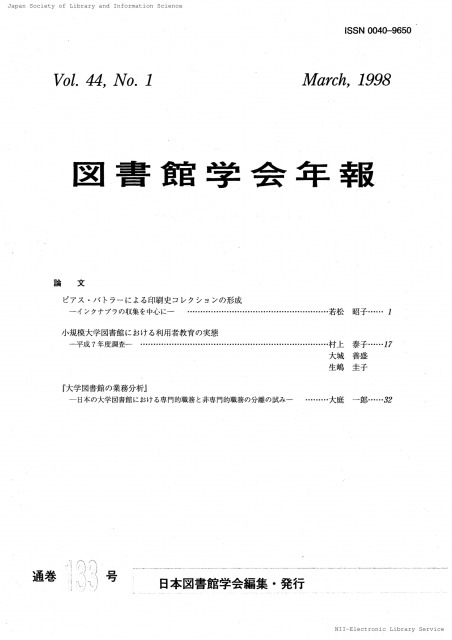Volume 31, Issue 3
Displaying 1-11 of 11 articles from this issue
- |<
- <
- 1
- >
- >|
-
1985Volume 31Issue 3 Pages 97-109
Published: 1985
Released on J-STAGE: October 07, 2022
Download PDF (1968K) -
1985Volume 31Issue 3 Pages 110-121
Published: 1985
Released on J-STAGE: October 07, 2022
Download PDF (1703K) -
1985Volume 31Issue 3 Pages 122-133
Published: 1985
Released on J-STAGE: October 07, 2022
Download PDF (1430K)
-
1985Volume 31Issue 3 Pages 134-138
Published: 1985
Released on J-STAGE: October 07, 2022
Download PDF (579K)
-
1985Volume 31Issue 3 Pages 109
Published: 1985
Released on J-STAGE: October 07, 2022
Download PDF (140K) -
1985Volume 31Issue 3 Pages 142
Published: 1985
Released on J-STAGE: October 07, 2022
Download PDF (108K)
-
1985Volume 31Issue 3 Pages 121
Published: 1985
Released on J-STAGE: October 07, 2022
Download PDF (136K) -
1985Volume 31Issue 3 Pages 133
Published: 1985
Released on J-STAGE: October 07, 2022
Download PDF (138K) -
1985Volume 31Issue 3 Pages 139-140
Published: 1985
Released on J-STAGE: October 07, 2022
Download PDF (323K) -
1985Volume 31Issue 3 Pages 141-142
Published: 1985
Released on J-STAGE: October 07, 2022
Download PDF (258K)
Summary
-
Article type: Summary
1985Volume 31Issue 3 Pages 143-144
Published: 1985
Released on J-STAGE: October 07, 2022
Download PDF (201K)
- |<
- <
- 1
- >
- >|
